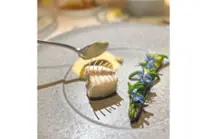One of the columnist's most memorable Hari Raya memories is of making ketupat. Photos: KALSOM TAIB
For many of us, our childhood is very much linked to our grandparents. Before my maternal grandfather, Tok Mat, passed away on 31 May 1972, we would, without fail balik kampung, every Hari Raya and stay at his house in Muar. The house used to be a landmark in Muar. It stood on the junction of Jalan Ibrahim, leading from the main roundabout near the Muar Club, and Jalan Othman, which goes on past the old Muar Rest House (now JKR office).
I remember we had to use the ferry service to cross the southern part of Muar town. For 53 years, this was the only means of transport to Muar before the bridge, Jambatan Sultan Ismail, was completed in 1967.





